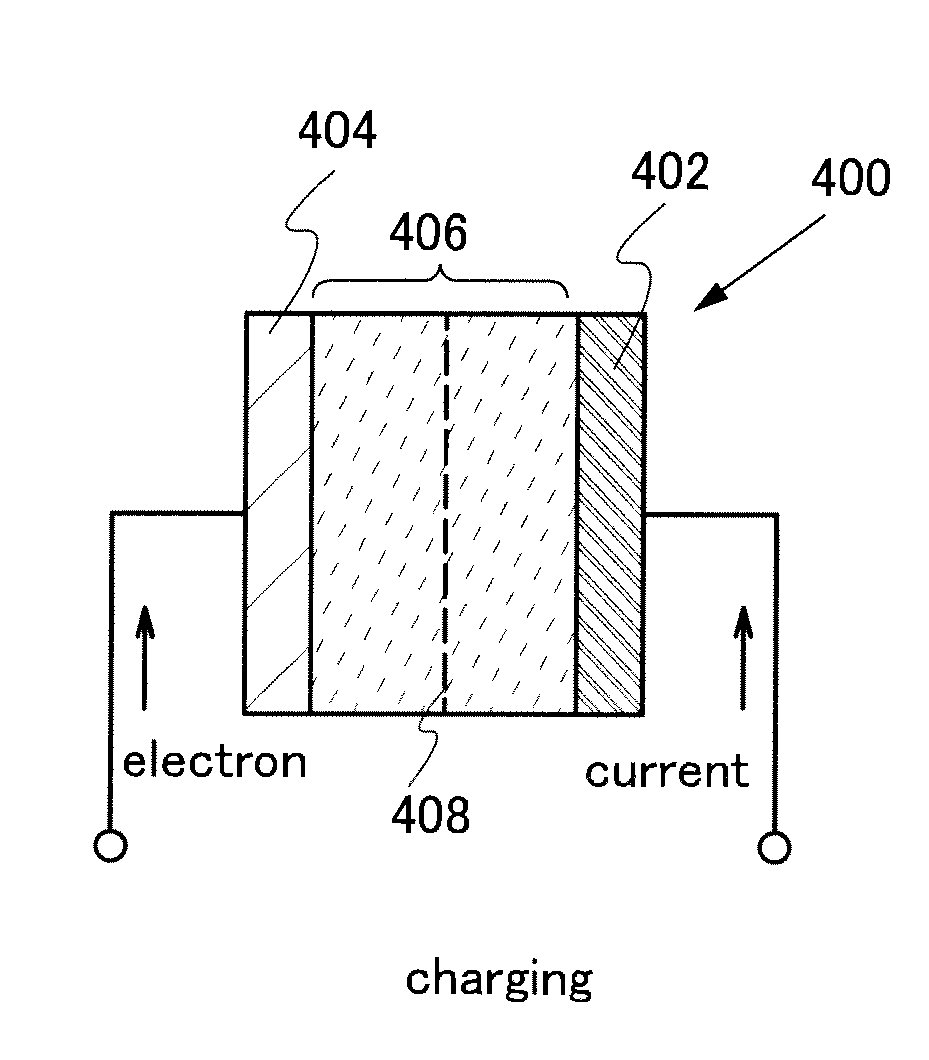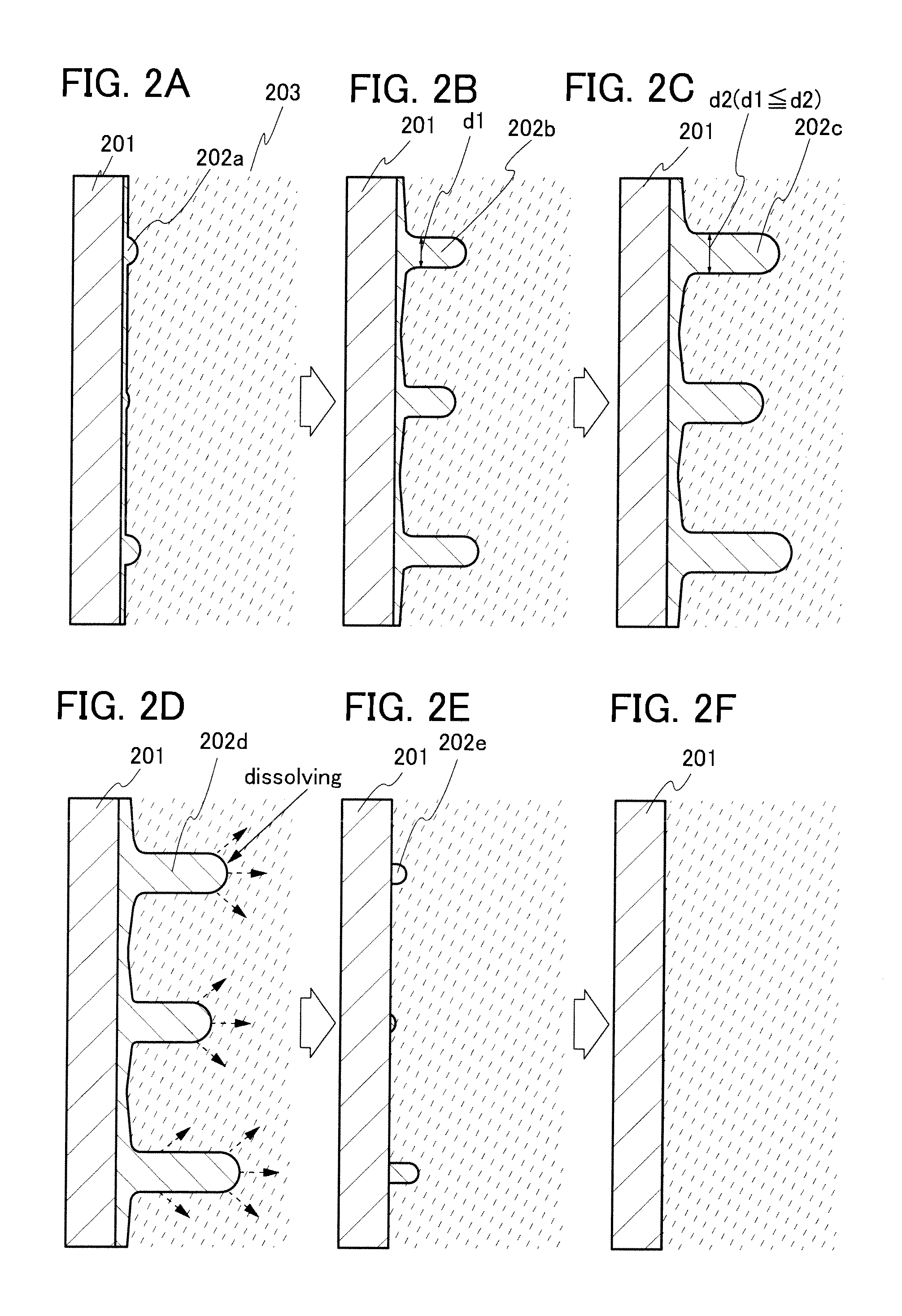Electronic device
a technology of electrochemical devices and electrodes, applied in the direction of electrochemical generators, secondary cell servicing/maintenance, transportation and packaging, etc., can solve the problems of affecting the service life of batteries. , to achieve the effect of reducing the degradation degree and removing the degradation of electrodes
- Summary
- Abstract
- Description
- Claims
- Application Information
AI Technical Summary
Benefits of technology
Problems solved by technology
Method used
Image
Examples
embodiment 1
[0135]A battery of one embodiment of the present invention is described in detail below.
[A-1. Fabrication of Evaluation Cell]
(Formation of Positive Electrode)
[0136]To form a positive electrode of an evaluation cell, first, lithium iron phosphate (LiFePO4) whose surface was provided with a carbon layer by a method described in this embodiment and N-methyl-2-pyrrolidone (NMP) as a polar solvent were prepared. These were stirred and mixed in a mixer at 2000 rpm for 5 minutes, and ultrasonic vibration was applied for 3 minutes. Further stirring and mixing were performed in a mixer at 2000 rpm for a minute. The same process was repeated five times.
[0137]Next, graphene oxide was added to this mixture, and stirring and mixing of the mixture in a mixer at 2000 rpm for 3 minutes were performed eight times. While being mixed eight times, the contents in a container were stirred with a spatula. Then, half of the total amount of PVDF used as a binder was added and the mixture was stirred and mi...
embodiment 2
[0163]In this embodiment, description is made on an example of a reaction product which is a lithium deposit.
[0164]As illustrated in FIG. 10A, when a lithium-ion secondary battery is charged, lithium ions that are carrier ions are extracted from a positive electrode active material 802 over a positive electrode current collector 801 included in a positive electrode 800, and move to a negative electrode active material 805 over a negative electrode current collector 804 included in a negative electrode 803. A current flow direction 820 at the time of charging can be shown by an arrow in FIG. 10A. Then, the lithium ions are inserted into the negative electrode active material 805 to provide a negative electrode active material 821 into which the lithium ions are inserted (see FIG. 10B).
[0165]However, when a current value exceeds the allowable value of the negative electrode, an abnormal state where lithium 806 is deposited on a surface of the negative electrode active material 805 is ...
embodiment 3
[0190]Next, structures of nonaqueous secondary batteries are described with reference to FIGS. 15A to 15C and FIGS. 16A and 16B.
[0191]FIG. 15A is an external view of a coin-type (single-layer flat type) lithium-ion secondary battery, part of which illustrates a cross-sectional view of the coin-type lithium-ion secondary battery.
[0192]In a coin-type secondary battery 950, a positive electrode can 951 serving also as a positive electrode terminal and a negative electrode can 952 serving also as a negative electrode terminal are insulated and sealed with a gasket 953 formed of polypropylene or the like. A positive electrode 954 includes a positive electrode current collector 955 and a positive electrode active material layer 956 which is provided to be in contact with the positive electrode current collector 955. A negative electrode 957 includes a negative electrode current collector 958 and a negative electrode active material layer 959 which is provided to be in contact with the neg...
PUM
| Property | Measurement | Unit |
|---|---|---|
| thickness | aaaaa | aaaaa |
| interlayer distance | aaaaa | aaaaa |
| interlayer distance | aaaaa | aaaaa |
Abstract
Description
Claims
Application Information
 Login to View More
Login to View More - R&D
- Intellectual Property
- Life Sciences
- Materials
- Tech Scout
- Unparalleled Data Quality
- Higher Quality Content
- 60% Fewer Hallucinations
Browse by: Latest US Patents, China's latest patents, Technical Efficacy Thesaurus, Application Domain, Technology Topic, Popular Technical Reports.
© 2025 PatSnap. All rights reserved.Legal|Privacy policy|Modern Slavery Act Transparency Statement|Sitemap|About US| Contact US: help@patsnap.com



